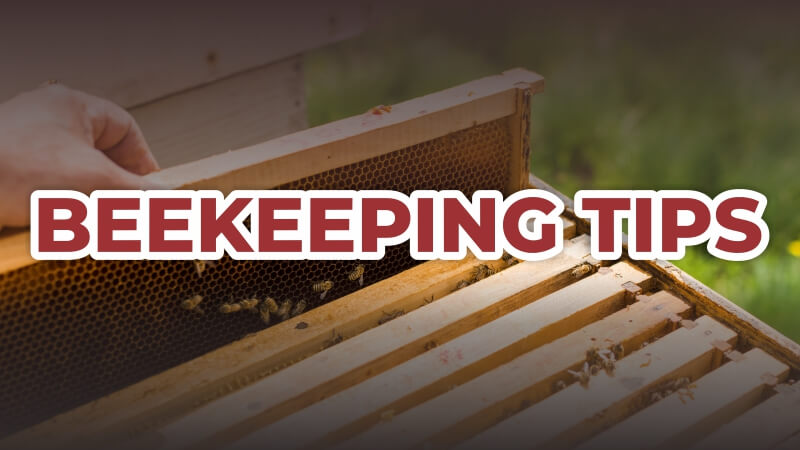One of the many insects in the world that can generate an item that is advantageous to everyone in the bee. These bees provide us with honey, which is a crucial diet for humans as we are all aware. Beekeeping is a significant occupation since honey has been used for treating many diseases since ancient times and is an antioxidant.
Introduction:
The Latin word “apis,” which means bee, is where the word “apiculture” originates. Apiculture, also known as beekeeping, is the raising of honey bees for the purpose of producing honey and wax. This technique involves the commercial breeding of bees in apiaries, which is a space where numerous beehives can be situated. Apiaries are typically built in places with enough bee pastures, like those with flowering plants.
What is Beekeeping/ Apiculture?:
Technically, raising honey bees is known as apiculture or beekeeping. The cultivation of bees of the species apis, or honeybees, is commonly referred to as apiculture. By gathering flower pollen, bee pollen, and other types of organic material, honey bees significantly aid in the preservation of nature.
Products Obtained From Beekeeping:
Items produced by apiculture Since most of the things we rely on, like honey and wax, are made by bees, bee products play a significant role in our daily lives. Bee products are essential for providing humans with the nourishment they need and for sustaining their daily diet. Furthermore, it is impossible to disregard their importance in providing humans with a means of subsistence and an income. Thus, it may be claimed that bees offer a wide range of ecological services to people. Therefore, it is safe to conclude that without bees, the environment and its inhabitants would disintegrate.
Importance of Beekeeping:
The following are beekeeping’s key benefits:
- provides honey, the most valuable food source of nutrients.
- provides bee wax, which is utilized in a variety of sectors, including the medicinal, polishing, and cosmetics industries.
- has a great impact on pollination. The best pollinators that contribute to raising the production of many crops are honey bees.
- Recent research suggests that the honey bee’s venom contains a combination of proteins that may one day be used as a preventative to kill the HIV that causes AIDS in humans.
Honey bee species
The social insects known as honey bees reside in hives or colonies. There is only one queen, tens of thousands of female worker bees, and a few hundred male drones in each honey bee colony.
These bees all carry out their various tasks differently. The most significant and potent bees in the colonies are the queens.
There are three castes that honey bee colony members can belong to, including
The Queen Bee is regarded as the mother of the colony, and she is the center of activity inside the hive. She can live for two to five years and produces about 2000 eggs. These eggs may or may not be fertilized. Unfertilized eggs develop into drones, while fertilized eggs develop into both the queen and worker bees.
The male members known as drones fertilize the developing queens. Compared to the queen, these are smaller but heavier.
The female bees who cannot reproduce are called workers. They are recognized as the colony’s most active inhabitants. Age affects how worker bees perform their jobs; they can live for three to twelve months. They carry out inside tasks like scavenging, acting as nurse bees, etc. for the first half of their lives. As scout bees and forager bees, they carry out outdoor tasks in the second half of their lives.
Planning Ahead For Beekeeping:
Successful beekeeping depends in large measure on careful planning. Before investing in honey bees and the tools required to maintain them and make honey, novice beekeepers should think about the following:
- number of colonies you’ll have when you start
- Your apiary’s location and the amount of site preparation required
- Where and how you’ll buy your bees (package bees and nucleus colonies should be ordered in the fall prior to the spring they are needed)
- Where you will buy the necessary equipment (such as beehives, beekeeper safety gear, and equipment for processing honey)
- Your spending capacity (your budget)
- Time commitment required for a beekeeping business
- Local and state regulations governing beekeeping
- Potential customers for your beeswax, honey, and other products
- registering honey bee colonies with your state’s agricultural department
- Registration of your beekeeping operation (this is now required in some states like Pennsylvania, even if you extract in a kitchen or structure such as a garage)
- A strategy for Varroa mite and other disease control
- Whether you intend to maintain bees for personal use and enjoyment only, as a side business to supplement your income, or as a business, will determine how many colonies you start with. Many professional and small-scale beekeepers got their start as hobbyists.
Marketing in Beekeeping:
Honey production for profit depends a lot on effective marketing. To find out your competitors, how much honey you can sell, and what form(s) your clients want their honey in, you should undertake market research.
A comprehensive marketing strategy that includes at least the following is necessary for the successful selling of honey:
- the creation of superior honey
- enticing packaging and labeling
- A successful advertising campaign
- reliable service for clients
Pollination in Beekeeping:
For beekeepers, renting out hives to growers for pollination services can be a significant source of income. To express your interest in renting your colonies for pollination, get in touch with groups that represent fruit and vegetable growers, your state or local beekeeping association, your county extension educator, or a university beekeeping specialist. When honey bee colonies are rented for pollination services, it’s crucial for beekeepers and growers to have a formal agreement in place to prevent misunderstandings. The contract needs to cover the following significant details:
- When to bring bees into the crop, when a specific bloom condition will occur, and when bees should be removed, roughly speaking
- Place of crop
- Colonies positioning pattern
- Rental price and the date or dates that it is due
- A beekeeper will deliver a certain number of colonies that meet basic requirements.
- While bees are present in the crop, the grower will not use bee-toxic pesticides; however, if this is unavoidable, a 48-hour notice will be given to the beekeeper.
- The grower will inform the beekeeper of any additional spraying in the area.
- Beekeeper will be compensated by the grower for any additional colony movements in, out, or close to the crop.
- The grower will grant the beekeeper access so they can handle the bees while they are at the pollination site.
To get the latest updates on the tractor, tractor price, and tractor news install the KhetiGaadi application.




